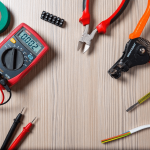Safety has become invaluable in the medical sector to streamline cost-effective, efficient, and functional devices. Medical coatings, ranging from antimicrobial liquids and lubricants to water repellent polymers have become the talk of the town. The equipment is sought almost at every phase of the procedure from clinical tests and surgeries to basic check-ups. Medical device manufacturers are expected to prioritize functional coatings applied to medical devices, including needle drivers, scalpels, reamers, and bone saws. Fortune Business Insights™ estimates the market for medical coatings market size to touch USD 7,990.0 million by 2027.
Antimicrobial Coatings offset COVID-19 Challenges
Tier 1 and tier 2 manufacturers have exhibited profound traction for antimicrobial coatings that can destroy viruses, bacteria, fungi, and molds. The ravage of the COVID-19 pandemic expedited the need to prevent microbial contamination of various types of surfaces. Antimicrobial coatings have become immensely popular in healthcare facilities to do away with healthcare-associated infections. High-touch surfaces, including medical devices, protective gears, and instruments had antimicrobial coatings to prevent and fight hospital-acquired infections.
There is no denying that antibiotic-resistant pathogens tend to cause healthcare-associated infections, posing challenges to hospitals. Accordingly, antimicrobial coatings have gained immense popularity in medical electronics and catheters. For instance, catheter coatings have become trendier to enhance cleanliness in healthcare facilities. The emergence of biostable, biocompatible, and non-toxic antimicrobial coatings will further gain ground globally.
Lately, antimicrobial implantable device coatings have received impetus for the treatment of cardiovascular diseases. Technological advancements and government policies poised to reshape the medical landscape.
Minimally Invasive Surgical Procedures Muster Up Confidence
Over the years, minimally invasive surgery has gained considerable traction due to a shorter hospital stay, less pain, and fewer complications. There have also been reports of a higher accuracy rate vis-à-vis traditional open surgery techniques. Accordingly, lightweight medical devices, such as guidewires, catheters, delivery sheaths, and balloon angioplasty catheters, have gained ground in navigating through sensitive parts of the body. It is worth noting that these devices sought during minimally invasive procedures in cardiovascular and cerebrovascular, among others. Therefore, medical coatings will further gain ground in boosting cost-efficiency.
Hydrophilic Coatings Underpinning Minimally Invasive Surgeries
An uptick in the aging population has promoted the need for minimally invasive surgery across the U.S., the U.K., China, and India. According to the U.S. CDC, approximately 80.8 million U.S. adults could be 65 or older by 2040. Amidst unprecedented healthcare challenges, hydrophilic coatings could be warranted in medical devices, including implants and cameras to help minimize tissue damage.
Hydrophilic coatings have the innate ability to attract water molecules and boost lubrication. Prominently, lubricity and wetness play a pivotal role in helping devices, such as balloon catheters, that assist with accurate positioning during minimally invasive surgeries. Moreover, lubricious coatings are profoundly applied to catheters used in a myriad of medical devices and endovascular stent graft procedures.
Stakeholders, such as engineers, have increased their attention in developing coatings that can make devices safer, cost-effective, durable, and stronger.
Expanding Prominence of Polymers
The application of polymers has become pronounced in medical equipment & tools, medical devices, medical implants, and protective clothing. Polymer-based coatings can propel corrosion resistance and durability while reducing friction coefficient. Some factors include optimum performance, low cost, easy availability, and multifunctionality. Polymer coatings could underpin various functionalities, including tissue growth, cell proliferation, delivery of biomolecules, and repair. In the ensuing period, these coatings could remain prominent in developing the next-gen instruments and biomaterials.
Prospects: Moving beyond Aesthetics
Medical coatings are garnering immense attention as lightweight medical devices gain significant traction. Medical coating service providers and suppliers will rethink their strategies to stay abreast of trends and boost innovations, thereby helping surgeons, engineers, and patients. An uptick in healthcare investments will muster up the confidence of stakeholders.
Advanced medical coatings are here to stay to provide functional upsides, including antimicrobial attributes, anti-glare surface for bright operating rooms, and anti-fouling. Original equipment manufacturers are taking a giant leap moving beyond aesthetics. Notably, they have enhanced their focus on applying Physical Vapor Deposition (PVD) coatings to boost lubricity, minimize galling between sliding components, enhance wear resistance, and help retain sharp edges on cutting instruments.


